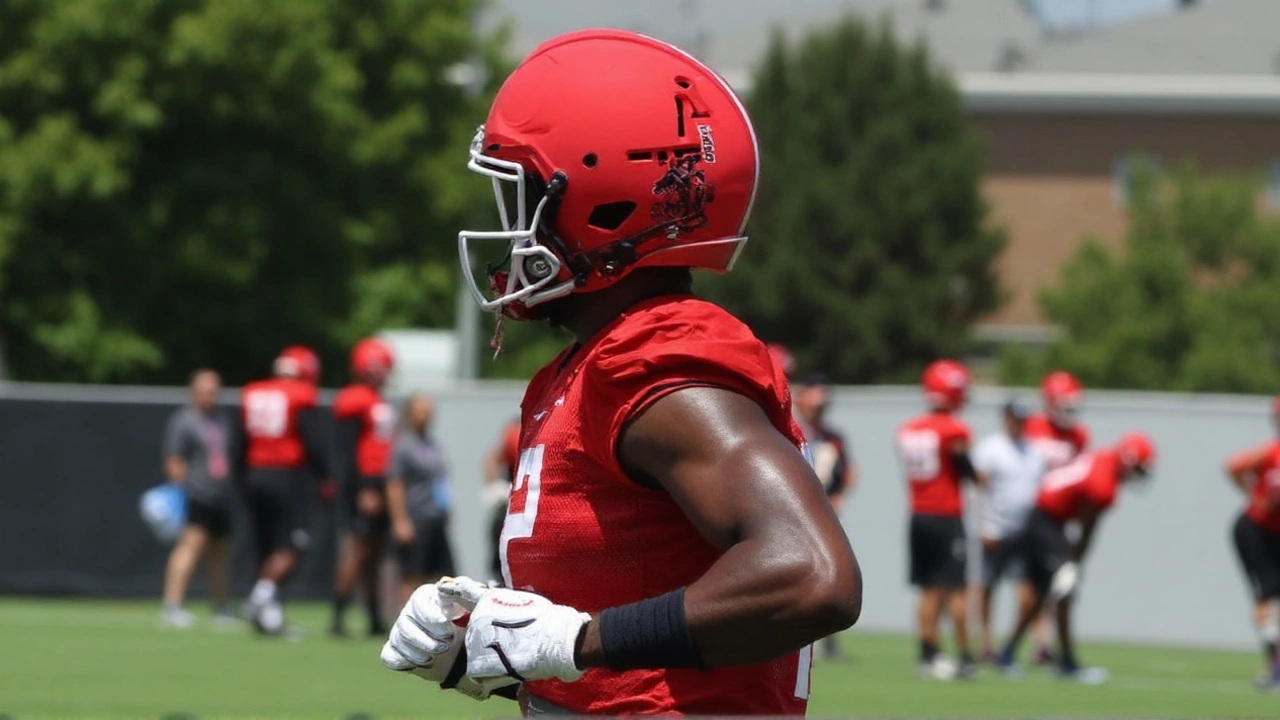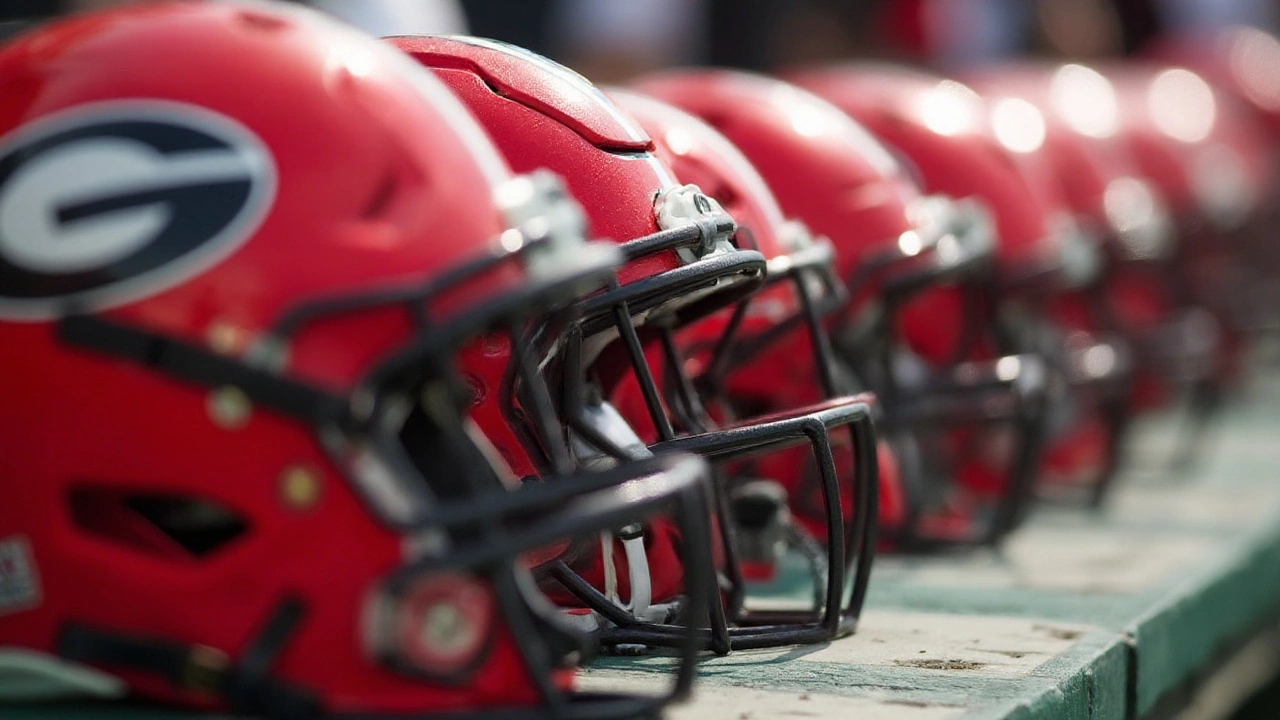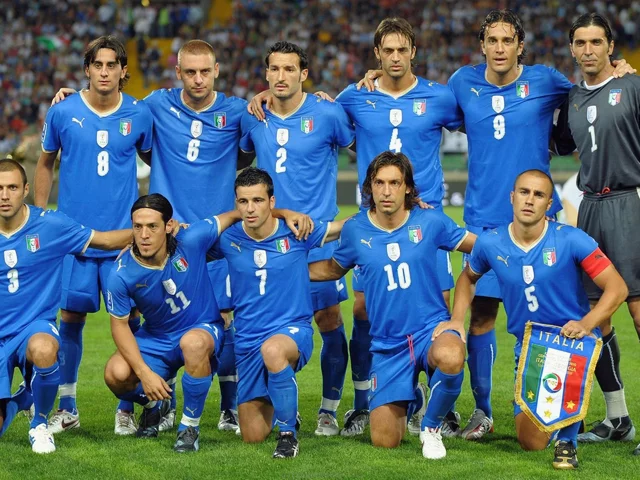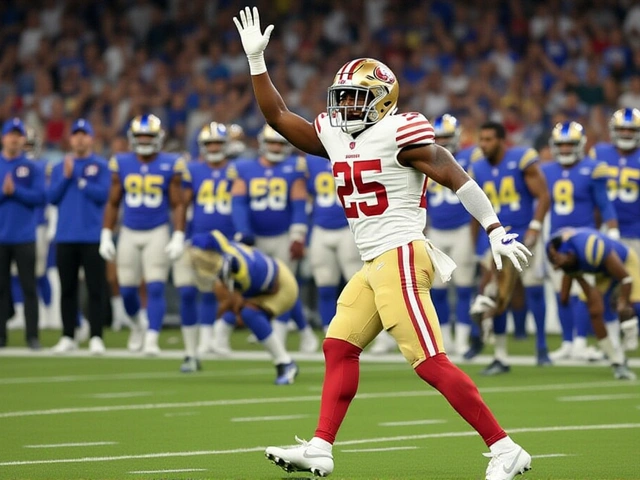Ethan Barbour ankle injury casts shadow over Georgia's win vs Austin Peay

- Kieran Winchester
- 7 September 2025
- 0 Comments
A serious setback on the last snap before halftime
On the final play before halftime, a quiet fell over Sanford Stadium. Georgia freshman tight end Ethan Barbour went down at the goal line with what looked like a significant ankle injury, and the celebration in a weather-delayed 28-6 win over Austin Peay turned into a worry about the weeks ahead.
Kirby Smart didn’t sugarcoat it. “Yeah, it was a tough ankle injury. It was a bad deal,” he told reporters after the game. The head coach said the staff doesn’t have a timetable yet, but his tone made it clear this could be a long absence. Barbour was carted off, and teammates surrounded him before he left the field.
The timing was brutal. Georgia had slogged through an extended weather delay, then finally found some rhythm late in the second quarter. One play later, a promising freshman—who had turned heads in the opener at Marshall—was down and in visible pain at the goal line. Those are the moments that cut through a scoreboard.
Details were scarce by night’s end. Smart didn’t specify the exact nature of the injury beyond calling it a “tough ankle.” In college football, that usually means the team will wait for further evaluation before talking timelines—imaging, swelling to go down, and then a plan. Until then, everyone is left with the image of trainers tending to Barbour and the cart ride that followed.
For Barbour, the start of his college career had real momentum. He arrived as one of the most talked-about newcomers in Georgia’s tight end room and flashed early—clean releases, competitive snaps in traffic, and the willingness to block that this staff demands. That early growth now pauses at the worst possible moment: right as Georgia packs for its first road game of the season.

How Georgia adjusts, and what it means for the tight end room
Georgia leans on tight ends. Under offensive coordinator Mike Bobo, they’re not window dressing; they’re central to the run game on the edges, pass protection on pressure downs, and the red-zone menu. The Bulldogs love two-tight end sets because they muddy defensive keys and stress the perimeter. Losing a young, ascending tight end takes away a personnel piece that helps Georgia disguise what it wants to do.
Practically, this shifts more work to the veterans. Expect the staff to lean harder on experienced options, whether that means heavier snap counts for the top two on the depth chart or situational roles for younger players who can handle a package or two. In the short term, the coaches will likely trim the playbook to what those backups do best—simpler run tags, cleaner play-action looks, and fewer moving parts pre-snap.
Special teams matter here, too. Many freshmen, especially tight ends, pull double duty on units like kickoff return or punt. If Barbour had carved out a role there, those snaps must be reassigned. That’s usually where coaches feel the squeeze first: you’re not just replacing a skill set on offense; you’re patching three or four spots across the game.
The red zone will be a focal point. Georgia’s tight ends are matchup pieces down near the goal line—big targets on shallow crossers, pivot routes, and those backside block-and-release plays that look the same as a run until they don’t. Without Barbour, Georgia may lean more on backs in the flat and wide receiver stacks to manufacture leverage near the pylon.
The Tennessee trip raises the degree of difficulty. Neyland’s noise turns simple things—like a late personnel shift or a check at the line—into a headache. Tight ends are the glue in those settings because they adjust protections, sift through traffic on split-zone looks, and create clean edges for the backs. With a key piece now likely out, Georgia’s margin for error gets thinner, especially early in drives when crowd energy peaks.
There’s also the long game to consider. NCAA rules allow players to appear in up to four games and still redshirt. If Barbour’s absence stretches deep into the fall, Georgia could preserve a year of eligibility. That decision usually comes later, after the medical picture clears and the staff weighs roster needs against the player’s long-term path.
What kind of ankle injury are we talking about? Smart didn’t say. In broad terms, a high-ankle sprain can mean weeks; fractures or dislocations can mean months. Each case is different, and the staff won’t speculate publicly. Expect a measured approach—Georgia’s medical team is known for being aggressive when appropriate but careful about rushing players back.
The program has dealt with tight end adversity before and kept humming. Brock Bowers’ rapid return from tightrope surgery in 2023 is the most famous example, a reminder that recovery timelines can surprise you. But that was its own case, with its own variables. For Barbour, the priority now is getting the diagnosis right and building a plan that sticks.
Saturday’s game itself felt secondary once the cart rolled out. Georgia overcame a shaky start after the weather delay and slowly stretched the lead, leaning on defense and controlled offense to move to 2-0. But the conversation afterward circled back to the freshman at the center of the night’s most gutting moment.
Inside the building, the next 48–72 hours bring clarity—medical evaluations, rehab mapping, and practice reps redistributed. For the staff, it’s a return to the “next man up” routine. For Barbour, it’s the tougher path that most players hope they never have to walk: the daily grind of rehab while the season moves on without you.
If there’s a silver lining, it’s this: Georgia’s tight end pipeline is built for depth, and this system makes it easier for young players to contribute in defined roles. Expect the Bulldogs to protect who they are—run the ball with intent, use tight ends to distort looks, and ask the quarterback to take what’s there. It won’t look drastically different, but the small details—who seals the edge, who runs the leak route, who chips the end—will change.
For a freshman who won over coaches with effort and flashes in September, the setback stings. But these seasons are long, and careers are longer. Georgia will adapt. The locker room will rally. And when the updates eventually come, they’ll shape whether this is a months-long pause or the start of a redshirt campaign that resets the clock for a tight end with real upside.
For now, one truth stands: a 28-6 win in the books, and a bigger question looming over the week—how Georgia reshapes itself in Knoxville without a young weapon it expected to use more with each game.


